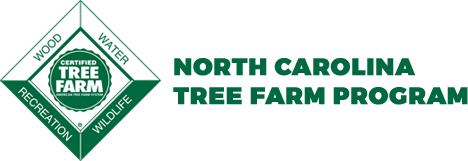Videos and Webinars – Forest Health
Pests and Invasives
Safe Use of Pesticides (North Carolina Tree Farm Program video)
Tree Farmer Rett Davis talks about product labels and how to safely use pesticides.
Controlling Invasive Trees with Herbicides (North Carolina Tree Farm Program video)
Learn steps you can take to get rid of invasive trees on your Tree Farm.
Chinese Privet: How to Control Its Spread (North Carolina Tree Farm Program video)
Learn how Chinese privet spreads and what you can do to control or eliminate it from your woods.
Bamboo is an Aggressive Invasive Plant (North Carolina Tree Farm Program video)
This non-native plant spreads by rhizomes and is an aggressive invasive plant. Landowners should take steps to remove it as soon as it appears on their property.
Controlling English Ivy (North Carolina Tree Farm Program video)
Tree Farmer Rett Davis discusses how to control or eradicate English Ivy.
Bradford Pear is an Invasive Tree (North Carolina Tree Farm Program video)
Bradford pear is an invasive tree that cross pollinates with native pears to create a wild variety that out-competes native plants. Learn how to get rid of this tree in your woodlands.
Japanese Stiltgrass (North Carolina Tree Farm Program video)
Learn about one of the most common invasive plants in North Carolina’s forests from Tree Farmer Rett Davis.
Poison Ivy (North Carolina Tree Farm Program video)
Pond Weeds: Watermeal (North Carolina Tree Farm Program video)
How to Treat Fire Ant Mounds (North Carolina Tree Farm Program video)
Fire ants are a non-native invasive species that are harmful to humans and wildlife. Learn how to get rid of them on your Tree Farm from Tree Farmer Rett Davis.
Identifying and Managing Woodland Threats (Cooperative Extension Service webinar)
Threats to your woodland can come in many sizes and shapes; disease, insects, invasive plants, and any combination of these three categories. In this session, our team of experts will introduce you to a few basic pest principles, present a model example of each threat, and offer some simple practices to help ensure your woodland remains healthy and productive.
Beneficial and Pest Insects in Our Forests: Management Recommendations (Warnell School of Forestry & Natural Resources webinar)
Many different types of insects inhabit our forests, both beneficial and pest insects. Native insects like bark beetles, pine tip moth, and Deodar weevil can cause problems in pine stands. The distinction of when a native insect becomes a pest insect be highlighted. Management options including habitat management, thinning, burning, and pesticide use will be discussed.
Invasive Species in Southern Forests: Problems and Solutions (Warnell School of Forestry & Natural Resources webinar)
An invasive species is a non-native species (including seeds, eggs, spores, or other propagules) whose introduction causes or is likely to cause economic harm, environmental harm, or harm to human health. The term “invasive” is used for the most aggressive species.
Southern Pine Beetle Biology, Ecology and Management (Southern Regional Extension Forestry)
This webinar focuses on the basic biology, ecology, and management of the southern pine beetle (SPB). It will look at the southeastern U.S. and the recent encroachment of SPB into the northeastern states.
Invasive Plant Best Management Practices (USDA Forest Service)
Whether you’re a gardener, a landowner, a forester to a logger; the movement of invasive species is always a concern. A BMP can be as simple as cleaning your shoes or as complex as pressure washing your bulldozer. Regardless of your practice, the goal is always to minimize the spread of invasive species. Learn how to create best management practices (BMPs) that help identify and minimize the spread of invasive species.
Drought and Invasive Species (Southern Regional Extension Forestry)
Drought creates the potential for invasive plant species to increase in diversity and abundance in a variety of ecosystems, often mediated by the occurrence of disturbances (wildfire, insect outbreaks).
Privet Biology and Management in Southeastern U.S. Forests (Southern Regional Extension Forestry)
Chinese and Japanese privet (Ligustrum spp.) are now prevalent across much of the southeastern U.S. Once a prized landscape shrub, privet has become extremely common in many wooded areas, impacting wildlife, native vegetation, and biodiversity.
Weather and Climate
Weather Variability and Its Impact on Forest Health (Southern Regional Extension Forestry)
This webinar discusses the impact weather and climate have on forest health and productivity. It also addresses short- and long-term impacts of droughts, floods, winds, and ice on insect and fungal populations and damage in southern forests.
Southern Foresters’ Climate Observations (NC State Extension Forestry)
Climate change beliefs and concerns are well documented for the American public, but fewer studies focus on the perceptions and adaptation needs of key groups involved in management of natural resources. We surveyed professional foresters in the southern United States to identify how frequently they observe sixteen climate-related variables that affect pine plantations and forests to evaluate how climate change responses vary across the South.
